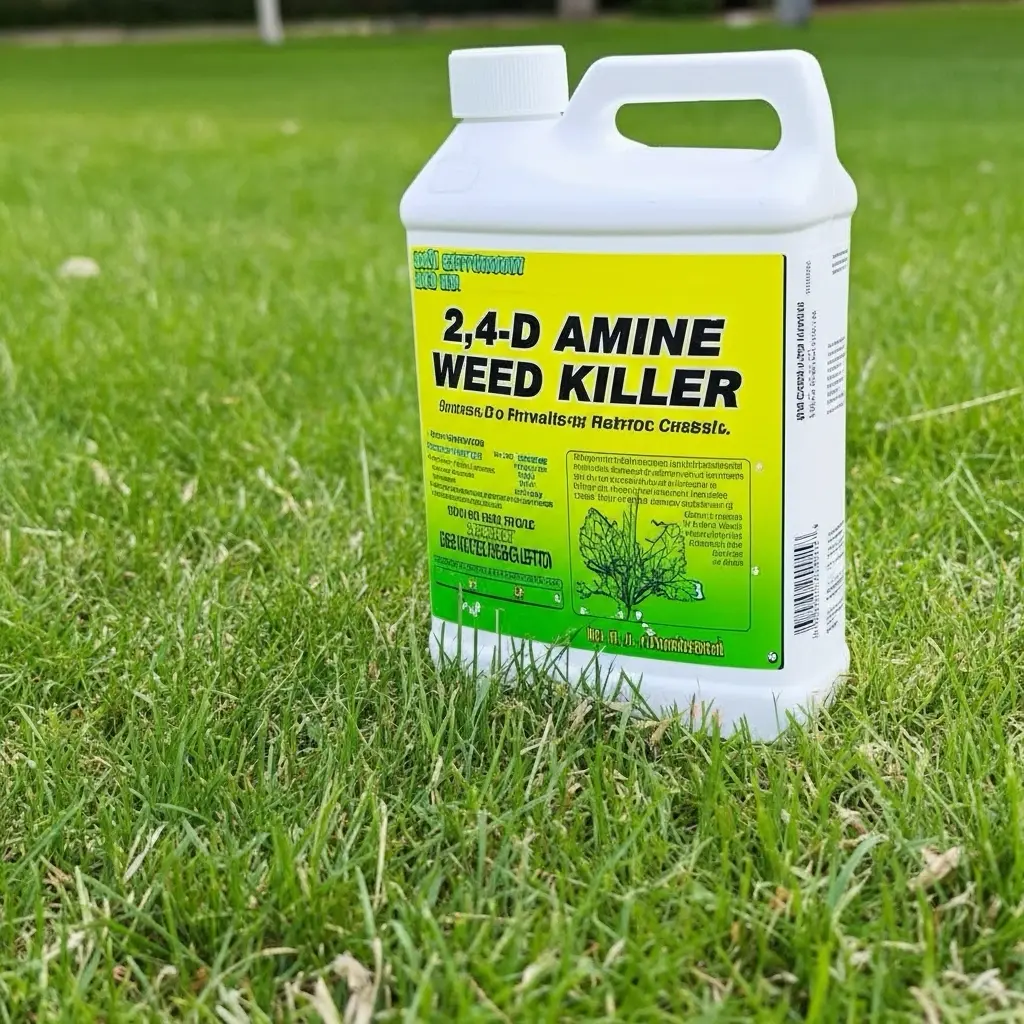Expert-tested weed control for lawns. Compare top products, real user reviews, and tips to choose safe, effective herbicides for any grass type. Use this research-driven comparison to choose the right product for your lawn, understand where editorial lists shine, and see what real homeowners report after months of use.
Table of Contents
Editorial Picks vs. Real-World Results
“Best weed killer” articles are a helpful starting point, but they often test under controlled conditions and limited climates. Conversely, Amazon reviews capture thousands of experiences across grass types, weather windows, and user skill levels. In this long-form guide, we compare highlights from The Spruce’s top weed killers with patterns repeatedly reported by Amazon reviewers. The goal is simple: turn mixed opinions into a clear, actionable plan that actually works on your lawn.
What you’ll get: concise product snapshots, real-world pros/cons, a side-by-side table, and a step-by-step framework to pick the right solution for your grass, weeds, and climate.
The Spruce’s Shortlist: What They Chose & Why
Here’s a condensed view of several notable products The Spruce calls out for different use cases (lawn-safe, total kill, pre-emergent, convenience). These highlights are useful—but remember they reflect specific tests and conditions.
| Product | Use Case (From The Spruce) | Key Advantages | Caveats / Watch-outs |
|---|---|---|---|
| Green Gobbler 20% Vinegar | Best overall (non-selective, fast knockdown) | No mixing; visible browning within hours; perceived “safer” around people/pets once dry | Non-selective (kills turf on contact); strong odor; rain reduces effectiveness; may require repeats on mature weeds |
| Ortho Weed B Gon (Chickweed/Clover/Oxalis) | Best value (lawn-safe broadleaf control) | Selective on many turf types; good on common broadleaf weeds; rainfast in ~6 hours | Not safe on all grasses; slower kill on deep-rooted weeds; may need re-treatments |
| Spruce Power Wand Weed & Grass Killer | Best applicator (battery wand; non-selective) | Precise spot-spray; reusable wand; quick surface knockdown on hardscapes | Non-selective; battery/run-time limits; wand length ergonomics; repeats for perennials |
| Spectracide Weed & Grass Killer (Concentrate) | Best for landscaping/hardscapes (non-selective) | Potent on many tough weeds; rapid wilting in warm sun; flexible mixing | Kills turf on contact; mixing errors risk over/under-application; multiple passes for large perennials |
| Southern Ag Amine 2,4-D | Best for lawns (selective broadleaf control) | Strong on dandelion/clover/ivy; economical concentrate; consistent when labeled correctly | Label/mix rate can confuse beginners; drift risk; heat-stressed turf more injury-prone |
Note: The Spruce also features non-lawn products like pre-emergent granules for garden beds; this comparison focuses on the items homeowners most often consider for lawns and edges.
Amazon Review Patterns: What Real Users Keep Saying
Thousands of buyer reviews surface consistent themes. These patterns are less about brand loyalty and more about biology, weather, and application accuracy.
- Timing beats brand. Most “didn’t work” complaints stem from late pre-emergents, heat/drought post-emergent sprays, or mature weeds beyond a product’s sweet spot.
- Selective vs non-selective confusion causes turf damage. “Roundup-style” total killers and vinegar sprays will scorch grass—spot only, away from turf.
- Repeat treatments are normal for established perennials (thistle, oxalis, creeping weeds) and nutsedge; expect 1–3 passes.
- Delivery system matters. Hose-end sprayers cover quickly but can over-apply; pump/handheld sprayers give better spot accuracy and fewer brown rings.
- Weather and drift separate happy from furious reviews. Calm, dry windows + proper nozzles = fewer “I nuked my lawn” stories.
Product Deep Dives: Editorial Claims vs. User Reality

1) Green Gobbler 20% Vinegar (Non-Selective)
Where it excels: Driveway cracks, sidewalks, and bed edges where you do not want any green left. Many users confirm “browns in hours” under full sun and dry foliage. No mixing and straightforward application make it a convenience favorite.
Where it struggles: Turf proximity (drift = brown spots), wet mornings (dew dilutes), and large mature weeds (need repeat hits). Odor is a common gripe. Expect re-sprays for deep-rooted perennials.
Do not spray across lawn areas. As a contact, non-selective killer, it will injure grass wherever droplets land.
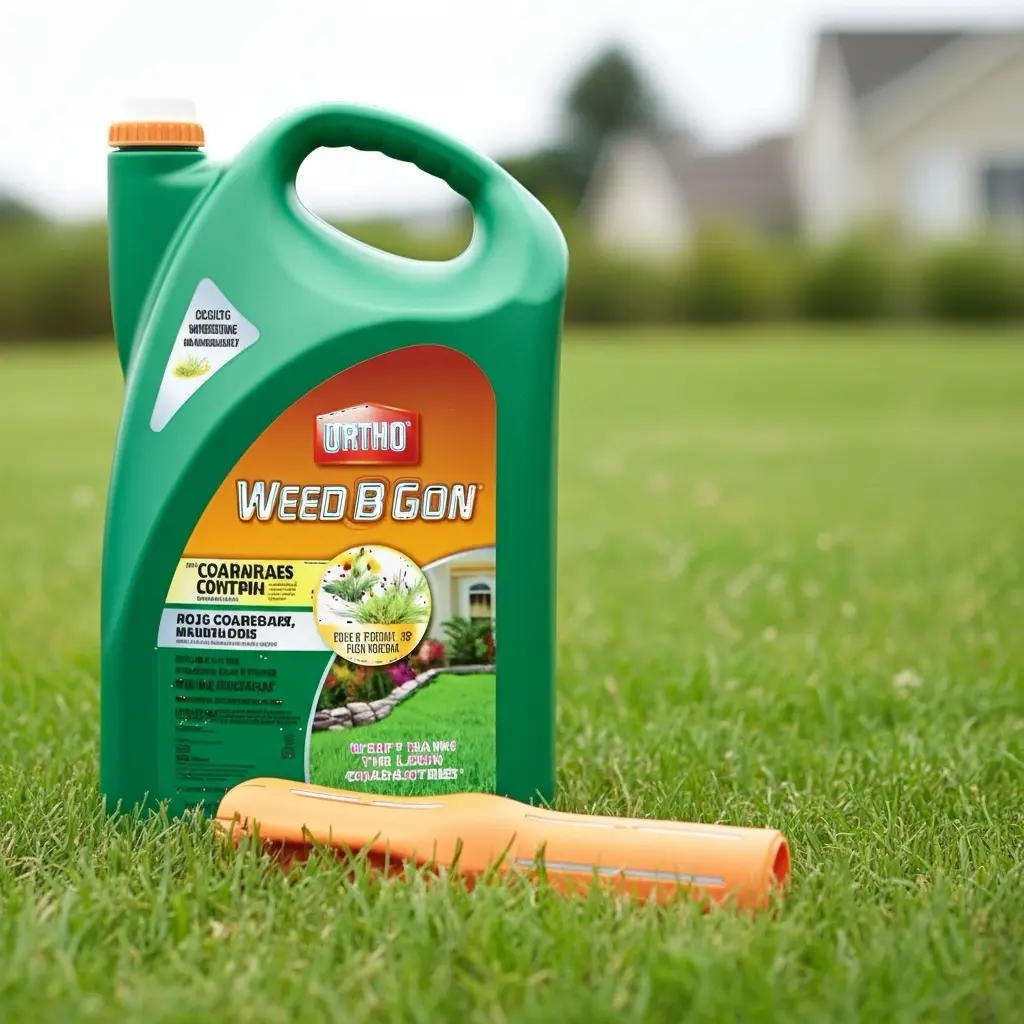
2) Ortho Weed B Gon (Chickweed/Clover/Oxalis) — Selective Lawn Use
Where it excels: Broadleaf weeds in cool-season lawns (e.g., Kentucky bluegrass, fescue) when applied at label rate during active growth. Users like the balance of efficacy with relatively low turf injury risk.
Where it struggles: Heat waves, drought stress, and very mature or deep-rooted weeds. Action is slower (several days to a couple weeks), tempting over-reapplication. Not for every grass species—always check your turf’s compatibility.
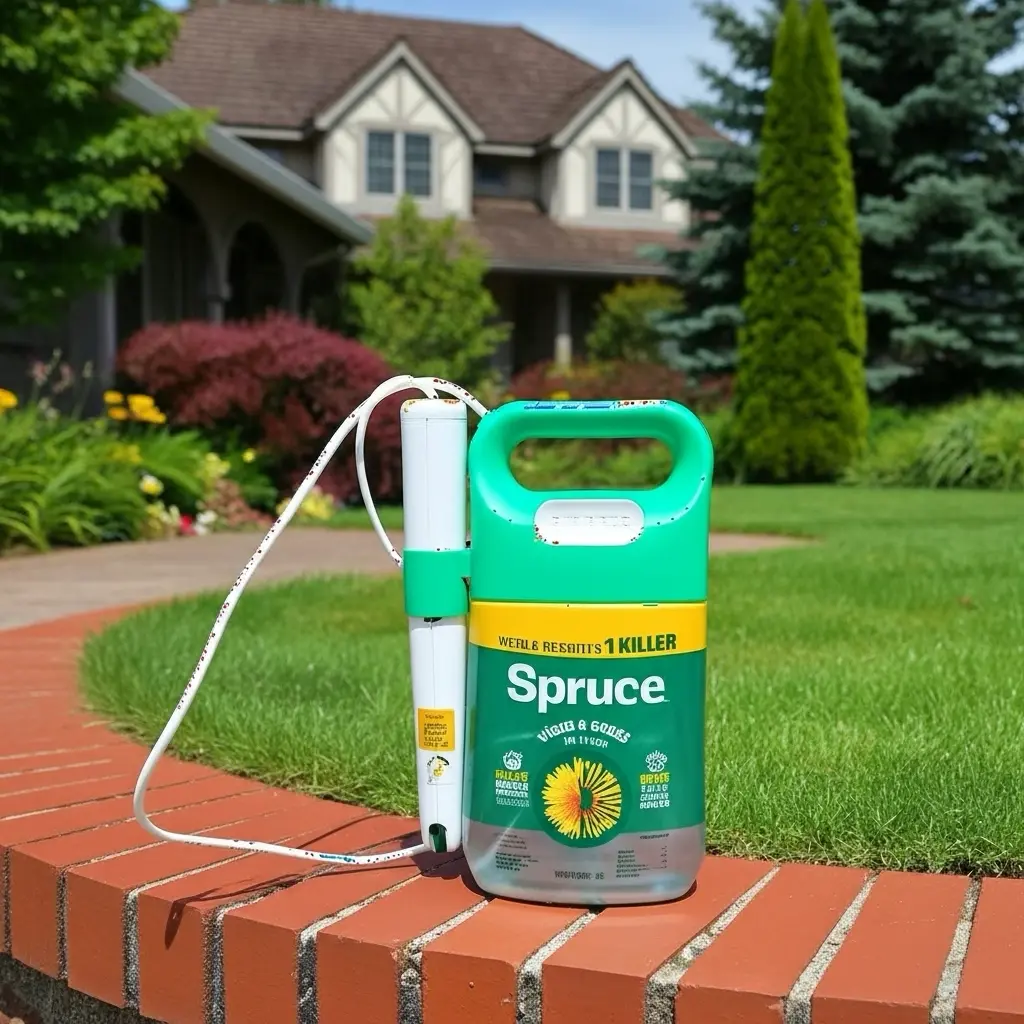
3) Spruce Power Wand Weed & Grass Killer (Non-Selective + Battery Wand)
Where it excels: Precision spot-spray on hardscape edges and small patches. The battery wand makes targeted work easy, and many users praise quick visible results on foliage.
Where it struggles: Full-lawn use, long sessions (battery life), taller users (ergonomics), and perennials (often need repeats). As a non-selective, it will burn turf—reserve for non-lawn zones or surgical spots far from grass.
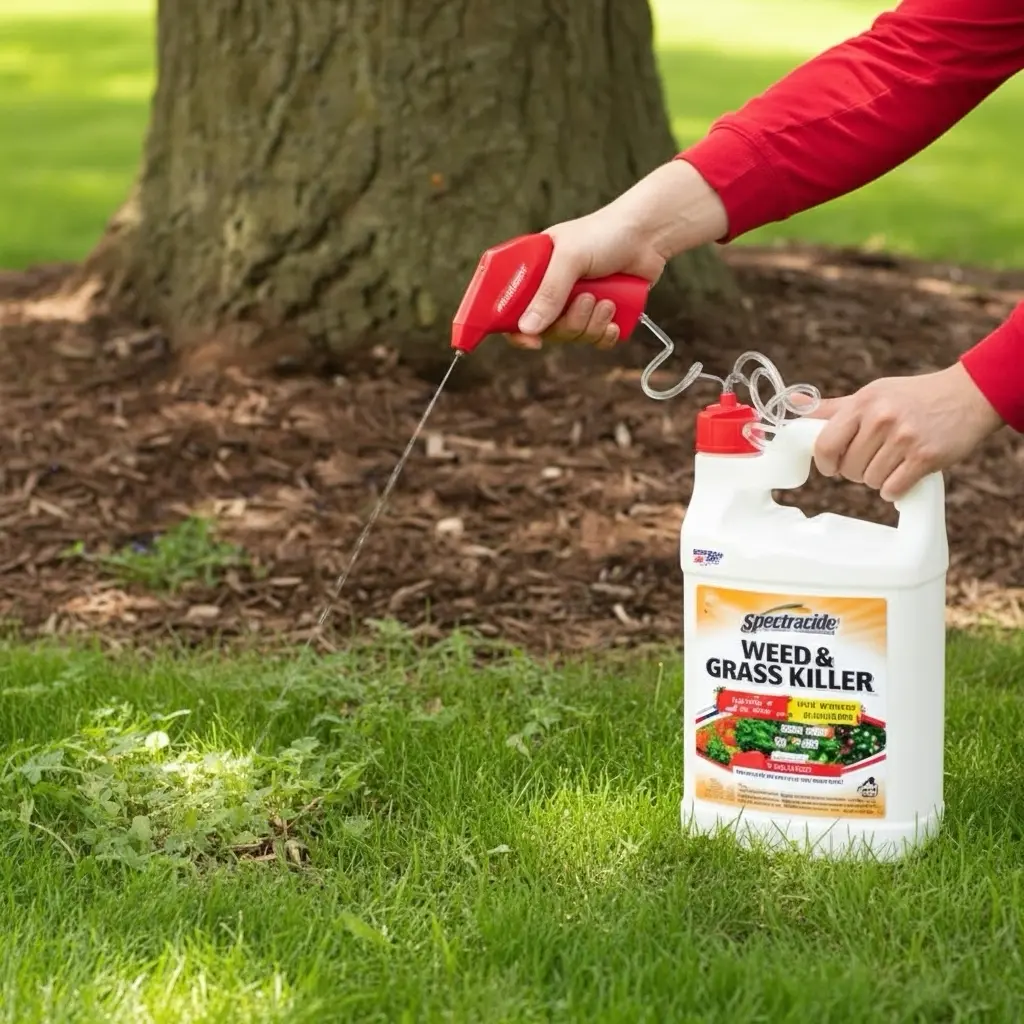
4) Spectracide Weed & Grass Killer (Concentrate, Non-Selective)
Where it excels: Versatile, potent control in non-lawn areas; users appreciate seeing wilting within hours in warm, sunny conditions. The concentrate format lets advanced users tailor strength.
Where it struggles: Mixing without a proper cup; overspray that reaches turf; larger perennials with strong crowns (expect multiple passes). As with all non-selectives, treat away from lawn or shield carefully.
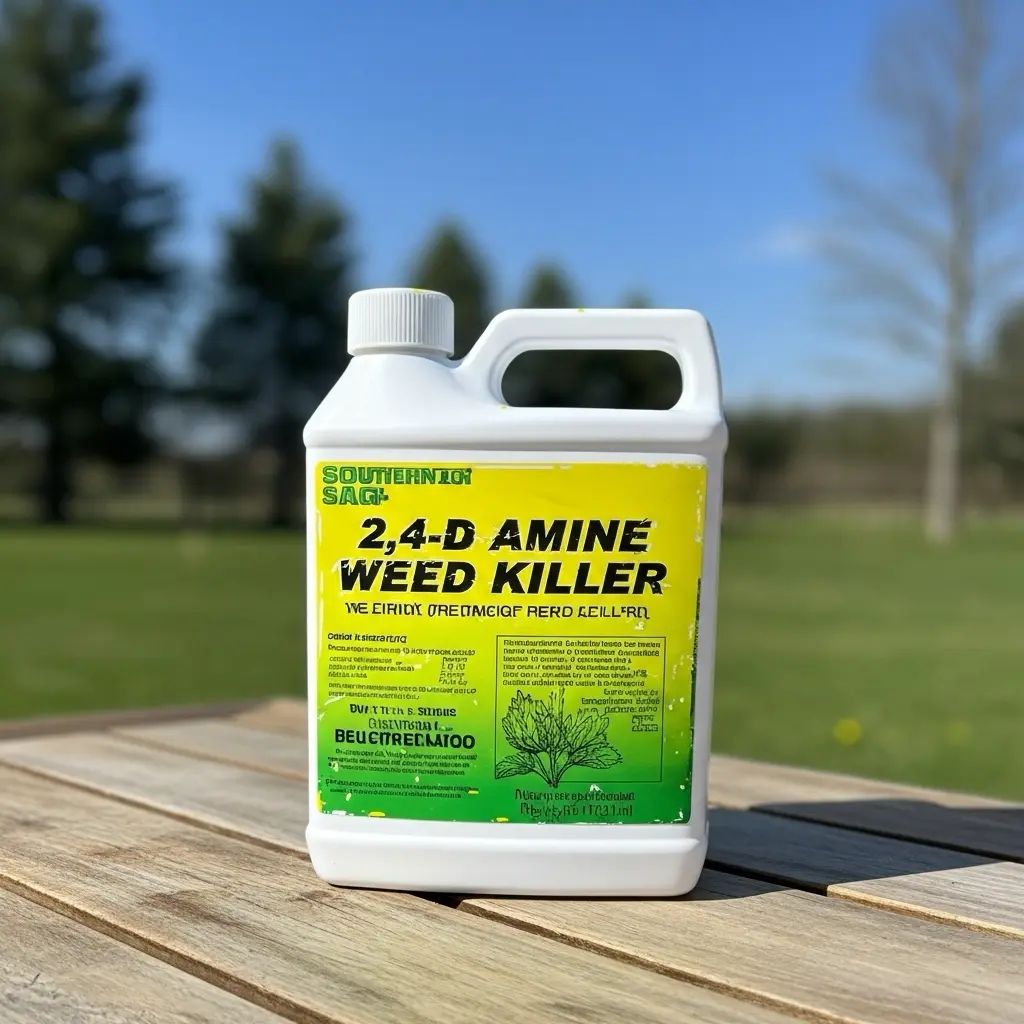
5) Southern Ag Amine 2,4-D (Selective Broadleaf)
Where it excels: Economical, serious broadleaf control in lawns when mixed and applied precisely. Many experienced users report durable results with minimal turf harm under proper conditions.
Where it struggles: Beginner confusion over mix rates; heat-stressed or newly seeded lawns; drift onto ornamentals. Like most selective post-emergents, expect a slower, steadier kill—don’t chase instant results with extra doses.
Side-by-Side Comparison
| Product | Selective? | Best Uses | Typical Wins (From Users) | Common Fail Points | Skill / Care Needed |
|---|---|---|---|---|---|
| Green Gobbler 20% Vinegar | No (non-selective) | Cracks, hardscape, bed edges | Fast visual knockdown; no mixing | Turf injury if drift; repeats for big perennials; odor | Moderate: target carefully; watch wind/rain |
| Ortho Weed B Gon (C/C/O) | Yes (lawn-safe when labeled) | Broadleaf weeds in lawns | Reliable on dandelion/clover; rainfast window | Slow kill; not for every turf; multiple passes on tough weeds | Beginner-friendly if you read label |
| Spruce Power Wand (Non-Selective) | No | Spot edges, small patches | Precise battery wand; quick scorch | Battery/run-time; turf burn if mis-aimed; repeats on perennials | Moderate: surgical targeting |
| Spectracide Weed & Grass Killer | No | Non-lawn zones; renovations | Potent; flexible dilutions; quick wilt in heat | Mixing errors; drift; multiple passes on big perennials | Intermediate: measure and shield |
| Southern Ag Amine 2,4-D | Yes | Lawn broadleaf control | Strong, economical; durable control | Mix-rate confusion; drift risk; heat stress injury | Intermediate+: precise mixing & timing |
How to Read Reviews Without Getting Misled
- Mid-star reviews (2–4★) often reveal true issues (drift, rain timing, mature weeds) without hype.
- Ignore “overnight total kill” claims on systemics—root death usually takes days or weeks.
- Match climate and turf type. A win in Phoenix may fail in Portland; St. Augustine ≠ Kentucky bluegrass.
- Check recent reviews (last 6–12 months) for formula/nozzle changes.
- Spot re-spray = normal. Persistent perennials rarely die with one pass.
A Decision Framework You Can Actually Use
Step 1 — Identify Your Turf & Weed Types
Cool-season (KBG, fescue, rye) vs warm-season (Bermuda, Zoysia, St. Augustine). List your top weed foes (dandelion/clover, crabgrass, nutsedge, creeping perennials). This determines selective vs non-selective and which actives make sense.
Step 2 — Choose Selective vs Non-Selective Intelligently
- Lawn areas: use selective products (e.g., Ortho Weed B Gon, 2,4-D) to protect turf.
- Hardscape/renovation: non-selectives (Spectracide, vinegar) are efficient and expected to kill everything they touch.
Step 3 — Match the Product to Weed Toughness & Timing
Pre-emergents must go down before germination; post-emergents want actively growing weeds in moderate temps. Mature crabgrass, nutsedge, and creeping broadleaves often need focused chemistry and multiple passes.
Step 4 — Pick the Right Applicator
- Spot work: handheld/pump sprayer or a battery wand for precision.
- Larger areas: backpack or hose-end (but beware over-application).
- Shield sensitive edges with cardboard or a specialty guard to prevent drift.
Step 5 — Small Trial, Then Scale
Test a 3×3 ft patch first. Evaluate at day 3, 7, and 14. Adjust rate (within label), nozzle, and timing before treating the whole lawn.
Step 6 — Keep Records & Rotate
Log dates, weather, rates, and results. Rotate modes of action across seasons to reduce herbicide resistance and keep products effective long-term.
Scenarios: What to Use, Where, and Why
Midwest (IL/MI/OH/PA) — Cool-Season Turf with Dandelion & Clover
- Best fit: Ortho Weed B Gon or 2,4-D (Southern Ag) as selective broadleaf control; apply during mild temps and active growth.
- Avoid: broadcasting non-selectives; use vinegar or Spectracide only for cracks and non-lawn edges.
- Pro tip: fall applications + overseeding improve spring weed suppression without upping chemical load.
Southeast/Gulf (FL/GA/AL/TX) — Warm-Season Turf with Buttonweed/Nutsedge
- Best fit: selective warm-season formulas; consider products with sulfentrazone/halosulfuron for nutsedge; for general broadleaf, lawn-safe mixes (read grass compatibility).
- Timing: earlier spring windows; heat raises volatility—spray mornings with low wind.
- Non-lawn zones: Spectracide or vinegar works, but shield turf carefully.
Southwest (AZ/NM/SoCal) — Heat, Wind, and Hardscape Dominance
- Best fit: non-selectives for rockscapes/paths (Spectracide, vinegar); selective spot treatments for any turf patches.
- Drift control: spray early morning, coarse droplets, and shield edges. Heat + wind are the main failure drivers in reviews.
Pacific Northwest (WA/OR) — Moss/Chickweed & Drainage Issues
- Best fit: selective broadleaf controls + cultural fixes (drainage, pH adjustment). Purely chemical approaches get lukewarm reviews if site issues persist.
- Non-lawn zones: vinegar products work but watch rain windows; re-applications are common.
Turn Reviews into Results
The right weed control for lawns isn’t about finding one magic bottle—it’s about matching a product’s strengths to your turf, weeds, and weather windows. Editorial lists help you shortlist proven options; Amazon reviews show what happens when conditions and technique vary. Use selective herbicides inside the lawn, keep non-selectives for edges and renovations, and control drift with good nozzles, calm-day spraying, and shields.
Expect multiple passes on mature or persistent weeds, log what works, and rotate approaches season-to-season. With that discipline, you’ll convert mixed opinions and “it didn’t work” stories into a predictable, greener, weed-lean lawn.
Want a tailored shortlist? Tell me your grass type, ZIP code, and the top 3 weeds you see. I’ll map product options, timing, and application tips for your exact conditions.
Sources consulted: The Spruce’s “Best Weed Killers” article and aggregated user patterns from recent Amazon listings for the products discussed. Always follow your local regulations and the product label—the label is the law.
FAQ
What is the difference between selective and non-selective herbicides?
Selective herbicides target weeds while sparing listed turfgrasses. Non-selective herbicides kill most green plants on contact and should be used only on hardscapes, bare soil, or for renovation—not across your lawn. Pre-emergent vs post-emergent—when should I use each?
Pre-emergent stops weed seeds from sprouting; apply before germination (e.g., crabgrass at ~55°F soil temp for several days). Post-emergent kills visible, actively growing weeds; apply during mild, non-drought conditions. Can I apply pre-emergent and overseed in the same season?
Usually not at the same time. Many pre-emergents block all seed germination (including grass seed) for 6–12+ weeks. Overseed before pre-emergent or choose a product/interval compatible with seeding per the label. What soil temperature should I watch for crabgrass prevention?
Target pre-emergent when soil temps reach ~55°F (13°C) for several days (often early spring; earlier in the South). Use a soil thermometer or local extension maps for timing. Is “Roundup” safe for lawns?
Plain Roundup (glyphosate) is non-selective and will kill turf. Some products labeled “Roundup for Lawns” are selective mixes safe on certain grasses when used as directed. Read the exact label carefully. What’s the best weed control for lawns if I have pets and kids?
Choose lawn-safe selective products and follow label re-entry rules (often “until dry” or a set number of hours). Spot-treating, using shields, and improving turf health reduce overall chemical use. How do I prevent spray drift and off-target damage?
Spray in low wind (typically 3–10 mph), avoid temperature inversions (very early/late), use drift-reducing nozzles, keep boom/wand low, and shield ornamentals with cardboard or a spray guard. Why did my lawn get brown spots after spraying?
Possible causes: used a non-selective on turf, overdosed, sprayed during heat/drought, or drifted droplets. Confirm your grass is listed as tolerant, calibrate your sprayer, and apply in mild weather. How long after application before rain is okay?
Depends on label. Many post-emergents require a rainfast window (e.g., 1–6 hours). Pre-emergents may require watering-in. Always follow the specific product directions. Why didn’t my pre-emergent work?
Common reasons: applied too late (after germination), barrier disturbed by aeration/raking, insufficient watering-in, or the residual ran out. Consider split applications or a longer-lasting active next season. Do I need multiple applications for tough weeds?
Often yes. Deep-rooted perennials (e.g., ground ivy), mature crabgrass, and nutsedge typically need repeat spot treatments per the label, plus cultural fixes (mowing height, drainage, fertilization). What controls nutsedge best in lawns?
Look for actives like sulfentrazone or halosulfuron (lawn-safe when labeled). Improve drainage and avoid over-watering to reduce nutsedge pressure. How do I deal with herbicide resistance?
Rotate modes of action (MOA), spot-treat escapes with a different MOA, and strengthen turf density. Don’t blanket-spray the same chemistry multiple times each season. When should I mow relative to spraying?
Avoid mowing right before/after spraying post-emergents. Most labels suggest waiting 1–2 days before and 2–3 days after so leaves can absorb the herbicide fully. Can I mix weed control with fertilizer (weed & feed)?
Sometimes, but timing can conflict. Many homeowners get better results separating fertilization and herbicide so each happens at the optimal window. What’s a safe temperature range for spraying?
Most lawn-safe post-emergents perform best in 60–85°F (16–29°C). Spraying in high heat or drought raises turf injury risk; cold slows uptake. How do I choose weed control for lawns by U.S. region?
North/Midwest: spring/fall windows; crabgrass pre-emergent in spring.
South: earlier spring apps; warm-season turf safety matters.
Southwest: early mornings to reduce drift/volatility.
PNW: drainage/pH + selective sprays for chickweed/moss. Are organic options effective?
Acid/soap-based contact sprays provide fast top burn but often require repeated spot treatments. They’re great for hardscapes; use extreme care near turf. How soon can pets and kids return to the lawn?
Check the label. Many products allow re-entry once the treatment is dry (or after a specified time). Keep off wet turf and store products safely. What else can I do besides spraying?
Raise mowing height, correct pH with lime if needed, aerate compacted soil, improve drainage, overseed thin areas, and water deeply but infrequently. Healthy, dense turf is the best long-term weed control for lawns.

